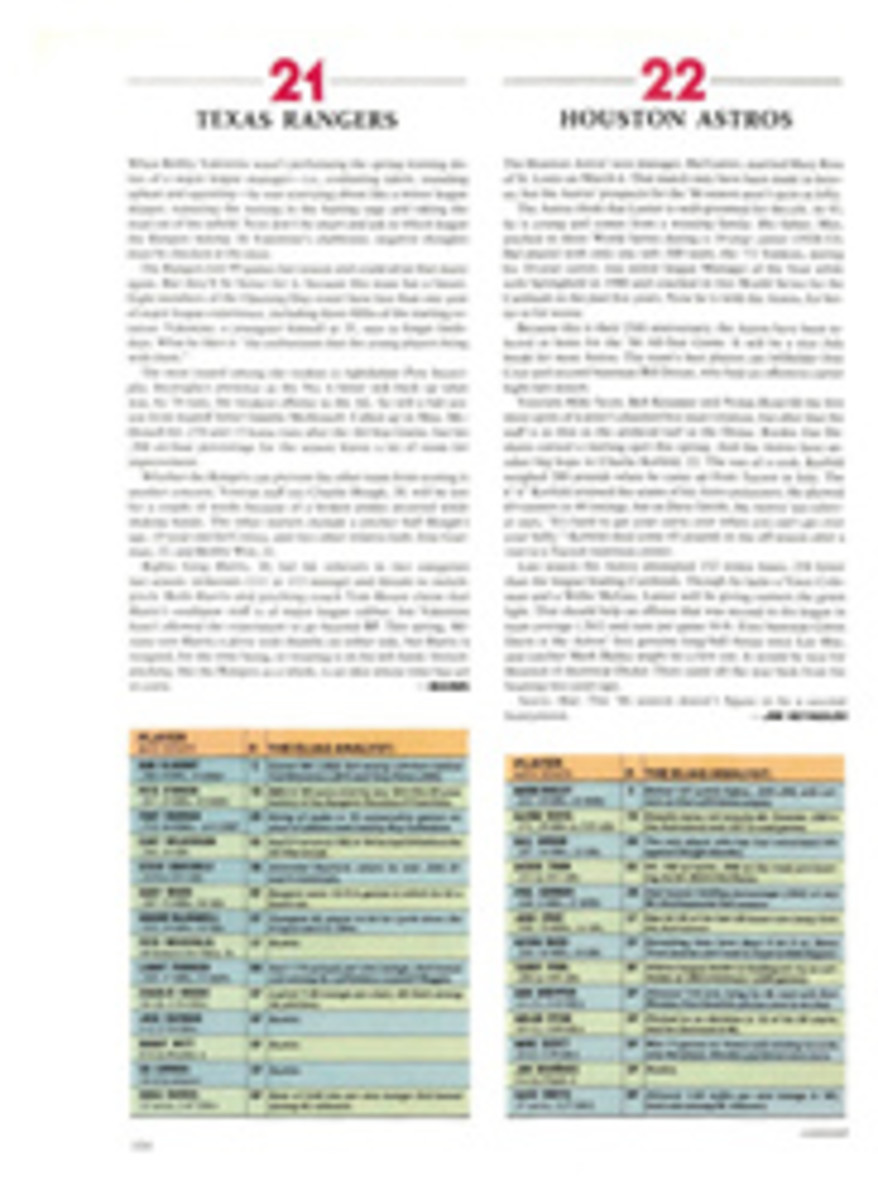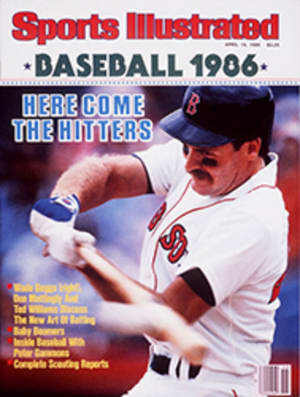
STEPHEN CRANE'S HISTORIC WAR NOVEL OWES A DEBT TO HIS LOVE OF BASEBALL
If England's imperial wars were won on the playing fields of Eton, then perhaps America's greatest war novel was written on the playing fields—the baseball diamond, to be exact—of Syracuse University. In 1891, Stephen Crane, the author of The Red Badge of Courage, was a catcher and. alternately, a shortstop for Syracuse. Although Crane was born in 1871, six years after the Civil War ended, and never experienced any battleground firsthand. The Red Badge of Courage is a masterly psychological portrait of a young Union soldier, widely acclaimed for its realism. When writer Hamlin Garland asked Crane where he had learned enough about combat to write convincingly on the subject. Crane's answer was: on the athletic field. 'The psychology is the same," he explained. "The opposing team is an enemy tribe."
Crane didn't look athletic. He was 5'6" tall, weighed 125 pounds and had droopy shoulders, knock-knees and an unimpressive chest. But he loved competition. A pitcher at Syracuse recalled that Crane played ball "with fiendish glee."
Crane lived for baseball. He began playing the game at 11 when his family moved from rural New York to Asbury Park, N.J. In summer he roamed the seaside resort playing pickup baseball with older boys; it was said that no one in the area could throw a ball that young Stephen couldn't catch bare-handed. At 18, he captained a team of men and boys from Asbury Park to a 9-0 win over a team from Atlantic City. A few years earlier he had written to a friend that he wanted to become a professional baseball player, "but Ma says it's not a serious occupation and Will [his brother] says I have to go to college first." He prepped for college at The Hudson River Institute, a military school in Claverack, N.Y., where he was the catcher on the school team. It was there that he began his literary career in earnest—reporting on his own games for the student newspaper.
In 1890 Crane decided to pursue a degree in engineering and enrolled at Lafayette College in Eastern. Pa. But he was seldom seen in the classroom; he spent most of his time outdoors playing intramural baseball in the hope of making the varsity team. Bad news came when his grades arrived at the end of the fall semester: Crane passed only two of his seven courses and didn't receive marks in three others because of poor class attendance. "I found mining-engineering not at all to my taste," he wrote later. "I preferred baseball."
Crane's mother, the niece of one of Syracuse University's founders, was able to arrange for him to transfer there for the winter semester. Crane still preferred catching to schoolwork. The university's records indicate that he took only one course. English literature, but he earned high marks—and a certain notoriety—on the diamond. In announcing the start of practice on Feb. 2, 1891, the school paper noted that "Crane, the old catcher of the Lafayette College team, has entered the University and will make a good addition to the team."
Crane's presence was felt instantly. Usually quiet off the field, he became passionate on it. He used profanity and was sarcastic toward his teammates when they played poorly, but he also praised good efforts.
Crane was a tough, feisty player. He eschewed the large, rounded catcher's mitt that was just coming into vogue and used a standard glove—really no more than a gardener's glove with a bit of padding in the palm. Shin guards had yet to be invented. No wonder Crane allowed three passed balls in the season-opening 14-11 win over St. John's. Manlius. Still, he held on to the ball better than anyone else on the team. His biggest drawback was his throwing arm; he needed a hop and skip to get his whole body behind the ball when throwing to second on an attempted steal. But he compensated for his physical limitations with guile. For example, he taught, his pitcher—teams generally had only one in those days—how to pick runners off base and he would signal the play from behind the plate with a slight movement of his hand.
Later in the spring, Crane was shifted to shortstop and played most of the season at that position, where throwing on the run better suited his arm. He committed five errors at short in an early game against Union, but played nearly flawless ball for the rest of the season. Crane didn't have much power at the plate, but his hits were well placed and he used his speed on the bases. His best outing was a three-for-seven day with three runs scored in a 31-5 rout of Rochester. In the final game of the season, he started at first base and ended in leftfield; there was even some talk that he was professional material. The Syracuse Stars indicated interest, but nothing came of it because he never tried out: He left school after the semester to become a writer.
"I did little work in school, but confined my abilities, such as they were, to the diamond," Crane wrote in 1896. "Not that I disliked books, but the cut-and-dried curriculum of the college did not appeal to me. Humanity was a much more interesting study."
PHOTO
SYRACUSE UNIVERSITY LIBRARIES
In 1891, Crane (chin in hand) posed with the Syracuse team.
Ed Bums works on the baseball desk at United Press International in New York City.

